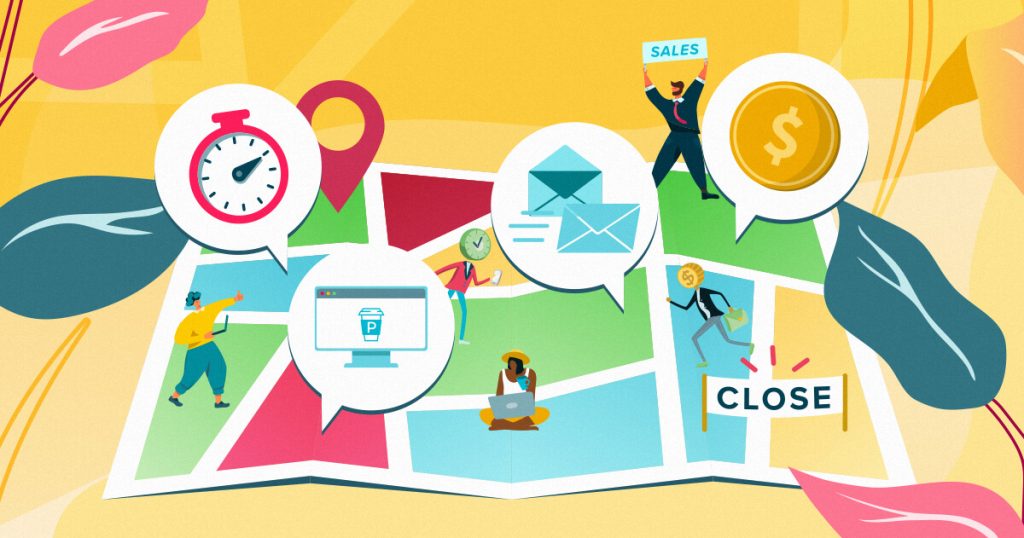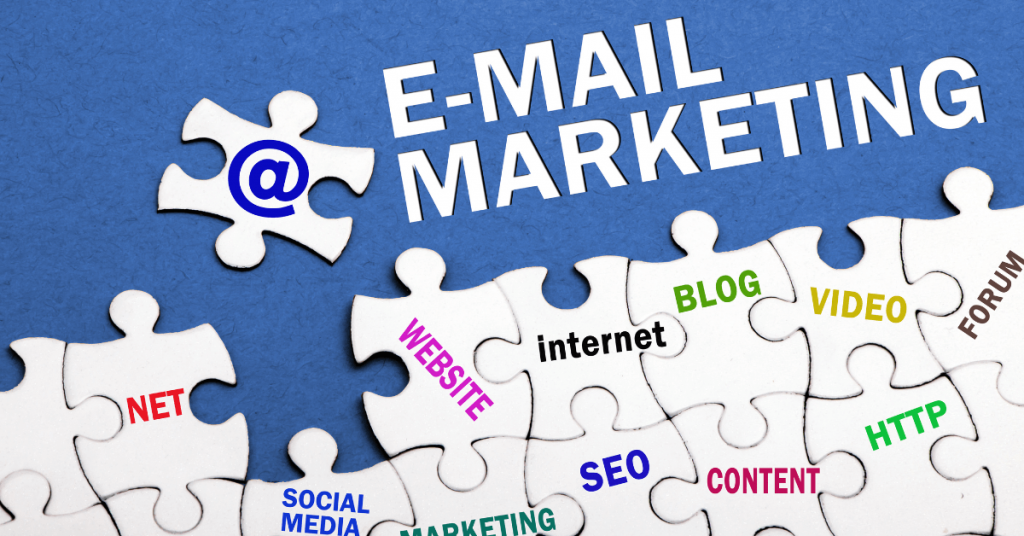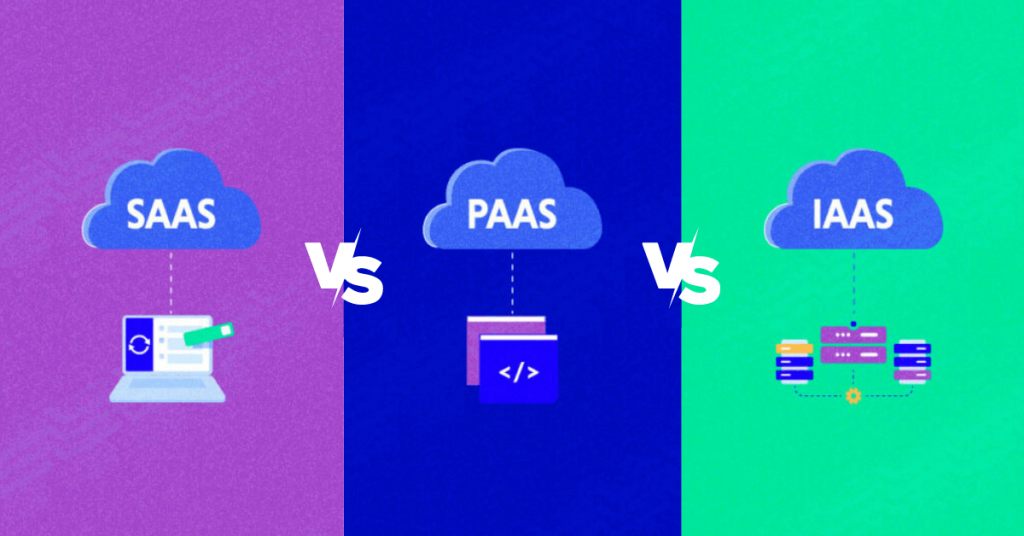A well-optimized sales cycle can be the game-changer that propels your business toward accelerated growth. To ensure that your SaaS company not only survives but thrives in this competitive environment, it’s imperative to master the intricacies of the B2B SaaS sales cycle. In this comprehensive guide, we’ll walk you through each crucial step, equipping you with the insights you need to supercharge your sales cycle for maximum impact. Whether you’re a seasoned industry expert or a newcomer, these insights are designed to keep you at the forefront of success.
Define: B2B SaaS Sales Cycle
The B2B (Business-to-Business) SaaS (Software-as-a-Service) sales cycle refers to the series of steps that a company goes through when selling its software solutions to other businesses. This cycle outlines the process from identifying potential customers to closing the deal and beyond.
However, the B2B SaaS sales cycle is a dynamic process that requires effective communication, tailored solutions, and a customer-centric approach. Each stage contributes to building a mutually beneficial relationship between the SaaS provider and the business customer.
Now let’s look at the detailed explanation of each stage.

What Are The Stages Of A B2B SaaS Sales Cycle?
The stages of a B2B (Business-to-Business) SaaS (Software-as-a-Service) sales cycle can vary depending on the specific company, industry, and target audience. However, here is a general outline of the stages typically involved in a B2B SaaS sales cycle:
1. Prospecting and Lead Generation
At the heart of a successful B2B SaaS sales cycle lies the prospecting and lead generation phase. Here’s a closer look at how to make this phase not just a starting point, but a foundation for success:
Targeted Lead Generation
Effective lead generation starts with defining your Ideal Customer Profiles (ICPs). By analyzing your existing customer data, you can identify patterns and characteristics that indicate a high potential for conversion. This ensures that your efforts are focused on leads with the highest likelihood of becoming valuable customers.
AI-Driven Lead Scoring
Leverage the power of Artificial Intelligence (AI) tools to score leads effectively. These tools analyze prospects’ behavior, interactions, and engagement with your brand, allowing you to identify the most engaged and qualified leads. This data-driven approach significantly enhances the accuracy of lead prioritization.
Building a High-Quality Lead List
While quantity might seem appealing, the quality of leads matters more. Construct a lead list comprised of prospects that align closely with your SaaS solution and exhibit genuine interest. Quality leads ensure that your outreach efforts are targeted and yield higher conversion rates.
2. Initial Outreach and Qualification
With a solid lead list in hand, the next step is initiating meaningful conversations that pave the way for successful conversions:
Craft Personalized Outreach Messages
Generic outreach is easily dismissed in today’s crowded digital landscape. Craft personalized messages that resonate with each prospect’s pain points and aspirations. Highlighting how your SaaS solution addresses their specific challenges demonstrates a level of understanding that sets you apart.
Multi-Channel Outreach
Diversify your outreach channels to increase your chances of catching the prospect’s attention. Beyond traditional email outreach, consider leveraging social media platforms and even personalized videos. A multi-channel approach ensures that your message reaches prospects through their preferred channels.
Qualification Criteria
Not every lead will be an ideal fit for your solution, and that’s okay. Define clear qualification criteria that align with your product’s value proposition. This ensures that your sales team invests time and effort into leads that are most likely to convert, improving efficiency and boosting results.
3. Product Demos and Presentations
As your prospects become engaged, it’s time to demonstrate the unique value your SaaS solution brings to the table:
Design Impactful Product Demos
Craft product demos that speak directly to your prospect’s pain points. Showcase key features and functionalities with real-world use cases, helping prospects visualize how your solution addresses their specific challenges.
Address Pain Points
Your SaaS solution is not just a product; it’s a problem-solving tool. During demos and presentations, emphasize how your solution directly addresses the pain points your prospect is currently facing. Paint a vivid picture of the positive impact your solution can have on their business.
Customize Presentations
Different stakeholders within a prospect’s organization have different priorities. Tailor your presentations to cater to the unique concerns and objectives of each decision-maker. This personalized approach demonstrates your commitment to meeting their specific needs.
4. Handling Objections and Concerns
In the B2B SaaS sales cycle, objections are an inevitable part of the conversation. Effectively addressing objections is key to moving the prospect toward a positive decision:
Address Common Objections
Identify objections that frequently arise and prepare well-thought-out responses. Anticipating objections allows you to provide compelling counterarguments, demonstrating your expertise and reassuring prospects that their concerns are valid and addressed.
Emphasize Value Over Price
Price objections are common, but focusing solely on price can undermine the value your solution offers. Shift the conversation toward the long-term value your SaaS solution brings to the prospect’s business. Highlight cost savings, increased efficiency, and potential revenue growth to justify the investment.
Share Success Stories
Leverage success stories and customer testimonials as powerful tools to overcome objections. Real-world examples of how your solution has solved similar challenges for other businesses provide social proof and instill confidence in your product’s capabilities.
Active Listening
Listening actively to your prospect’s concerns fosters a sense of trust and collaboration. When objections arise, give the prospect your full attention, acknowledge their concerns, and respond empathetically. This approach demonstrates that you value their perspective and are committed to finding solutions.
5. Closing the Deal
As you navigate the sales cycle, the pinnacle moment is close—the point where all your efforts culminate in a successful conversion:
Recognize Buying Signals
Being attuned to buying signals is pivotal. Look for signs such as increased engagement, specific questions about implementation, and inquiries about contract terms. These cues indicate that the prospect is nearing a decision point.
Navigate Contract Negotiations
Contract negotiations require finesse and transparency. Strive to find common ground that satisfies both parties’ needs. Flexibility in negotiating terms demonstrates your willingness to collaborate and accommodate their requirements.
Leverage Urgency
Creating a sense of urgency without resorting to high-pressure tactics can be a delicate balancing act. Limited-time offers, exclusive benefits, or incentives for early adoption can prompt prospects to make decisions promptly without feeling coerced.
Craft Win-Win Scenarios
Ultimately, the most successful deals are those where both parties benefit. Craft scenarios that align with the prospect’s goals and objectives while ensuring that your company achieves its desired outcomes as well. This collaborative approach enhances the likelihood of closing the deal on positive terms.
6. Onboarding and Customer Success
Beyond the sale, the journey continues into the onboarding and customer success phase, setting the stage for a fruitful, long-term relationship:
Seamless Onboarding
Transitioning smoothly from the sales phase to onboarding is critical. A well-structured onboarding process ensures that the customer’s experience remains positive and consistent. Provide clear guidance, resources, and support to facilitate a seamless transition.
Customer-Centric Approach
Maintain a customer-centric focus beyond the initial sale. Regular check-ins, proactive support, and tailored communication show your dedication to the customer’s success. By consistently delivering value, you reinforce their decision to choose your solution.
Continual Engagement
Sustained engagement post-sale keeps your solution top-of-mind. Regularly share updates, new features, and relevant content that showcase your commitment to enhancing the customer experience. This ongoing interaction reinforces the value your solution provides.
Upselling Opportunities
As your customer’s needs evolve, seize the opportunity to introduce additional value through upselling or cross-selling. A satisfied customer is more likely to explore other solutions within your product suite, resulting in increased revenue and a deeper customer relationship.
How does the B2B SaaS sales cycle differ from traditional software sales?
B2B SaaS (Software as a Service) sales and traditional software sales do share some similarities, but they also have distinct differences due to the nature of the SaaS model. Here are some key differences between the two:
1. Delivery Model:
- B2B SaaS: In the SaaS model, software is hosted on the vendor’s servers and accessed via the internet. Customers typically subscribe to the software on a recurring basis, paying for usage or licensing.
- Traditional Software: Traditional software is installed locally on the customer’s servers or individual computers. Customers usually purchase a one-time license to use the software, with the option to upgrade for new versions.
2. Pricing Structure:
- B2B SaaS: SaaS often follows a subscription-based pricing model, where customers pay on a regular basis (monthly or annually) for access to the software and ongoing updates/support.
- Traditional Software: Traditional software usually involves a one-time upfront cost to purchase a license. Additional costs might be associated with support, updates, and upgrades.
3. Sales Approach:
- B2B SaaS: SaaS sales tend to focus on building a long-term relationship with customers. There’s an emphasis on demonstrating the ongoing value of the subscription, and customer success plays a significant role.
- Traditional Software: Traditional software sales can have a more transactional approach, with a focus on closing the initial sale. Ongoing customer relationships might be managed more by support teams.
4. Customer Engagement:
- B2B SaaS: Continuous customer engagement is crucial for SaaS companies. Regular communication, customer feedback loops, and updates are common to ensure customer satisfaction and retention.
- Traditional Software: Customer engagement might be less intensive after the initial sale. Interaction tends to focus on support, updates, and potential future purchases.
5. Upgrades and Updates:
- B2B SaaS: SaaS companies often release regular updates and improvements as part of the subscription, ensuring that customers always have access to the latest features and security enhancements.
- Traditional Software: Updates and upgrades for traditional software may require separate purchases or fees, and customers might choose to delay or skip upgrades due to associated costs.
6. Time-to-Value:
- B2B SaaS: SaaS products often have a quicker time-to-value, as customers can start using the software almost immediately after subscription. This can be appealing for businesses looking for rapid solutions.
- Traditional Software: Traditional software might require a longer implementation period, including installation, configuration, and training, which can extend the time-to-value.
7. Revenue Model:
- B2B SaaS: SaaS revenue tends to be more predictable due to recurring subscription payments, providing a more stable cash flow over time.
- Traditional Software: Revenue from traditional software sales can be more variable and dependent on the release of new versions or major upgrades.
Both B2B SaaS and traditional software sales have their own strategies, challenges, and benefits. The choice between the two depends on the nature of the software, customer preferences, market trends, and the company’s business model.
Conclusion – B2B SaaS Sales Cycle
In the dynamic realm of B2B SaaS, mastering the intricacies of the sales cycle is more than a strategic advantage—it’s a necessity. By meticulously navigating each stage, from targeted lead generation to post-sale engagement, you lay the groundwork for exponential growth.
Whether you’re refining your existing approach or embarking on a new journey, the insights provided in this guide equip you with the tools to navigate the complexities of the B2B SaaS sales cycle with finesse.
Your success story begins with understanding, implementation, and a commitment to nurturing lasting customer relationships. Get ready to propel your B2B SaaS venture toward unprecedented growth.

